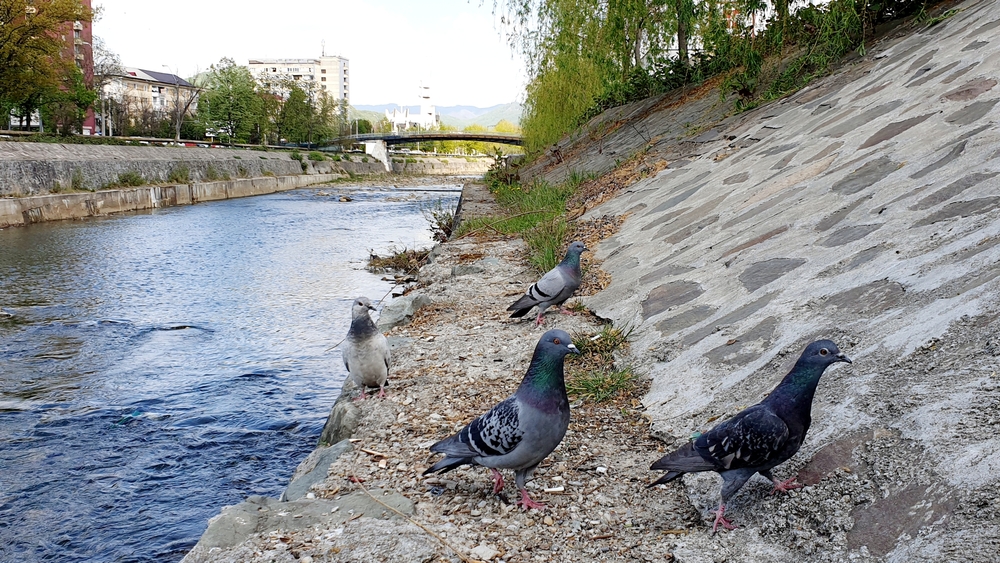
Urban Rivers and Wildlife: A Delicate Balance Between Harmony and Threat
Urban rivers, the lifeblood of many cities, create unique ecosystems where wildlife and human development intersect. These waterways serve as critical habitats for numerous species, providing refuge, food, and breeding grounds. However, they also bear the brunt of urbanization, suffering from pollution, habitat fragmentation, and altered hydrology. The relationship between urban rivers and wildlife is a tale of both resilience and vulnerability, showcasing nature’s ability to adapt while also highlighting the pressing need for conservation efforts.
Despite the encroachment of cities, urban rivers remain vital ecological corridors. Their riparian zones—areas of vegetation alongside the water—support diverse species, from fish and amphibians to birds and mammals. Species such as herons, otters, and freshwater turtles thrive in these environments, while migratory birds rely on them for rest and foraging during their long journeys.
One of the most remarkable aspects of urban rivers is their ability to provide habitat even in heavily modified settings. In particular, large rivers maintain populations of fish and semi-aquatic reptiles, which often adapt to urban conditions. Additionally, artificial wetlands and stormwater ponds, created to manage water flow, sometimes serve as alternative habitats for amphibians and certain fish species. Some reptiles, such as snapping turtles, have been observed to thrive in urban river environments despite human activity.
Urban rivers also offer ecosystem services that benefit both wildlife and human populations. They regulate microclimates, mitigate flooding, and support recreational and educational opportunities. Community-driven conservation projects, such as river cleanups and habitat restoration efforts, help revitalize these ecosystems, ensuring they remain viable for the species that depend on them.
While urban rivers support wildlife, they are also among the most threatened ecosystems. One of the primary concerns is habitat destruction and fragmentation. The construction of roads, dams, and flood control structures disrupts natural water flow, isolating wildlife populations and making migration difficult. Smaller streams, crucial for many species’ life cycles, are often buried or redirected into underground drainage systems, leading to severe habitat loss.
Pollution is another major threat. Runoff from roads, industrial sites, and agricultural areas introduces harmful chemicals, heavy metals, and excess nutrients into river systems. This leads to problems such as eutrophication, where excessive nutrients promote algae blooms, depleting oxygen levels and suffocating aquatic life. Amphibians, which are highly sensitive to pollutants, are particularly vulnerable. Studies have shown that increased metal concentrations and road salt runoff can significantly impact frog and salamander populations.
Invasive species also pose a growing challenge. Non-native fish, such as carp and mosquito fish, compete with native species for resources, sometimes leading to declines in biodiversity. Similarly, invasive plants like common reed (Phragmites australis) alter river hydrology and outcompete native vegetation, reducing habitat quality for fish, birds, and insects.
Human interactions further exacerbate these challenges. Uncontrolled fishing, littering, and recreational activities can disturb nesting sites and disrupt wildlife behaviors. Increased artificial lighting along riverbanks affects nocturnal species, altering feeding and breeding patterns. Additionally, high densities of human-subsidized predators, such as raccoons and crows, lead to increased predation on eggs and juvenile wildlife, particularly turtles and amphibians.
The future of urban river ecosystems depends on strategic conservation efforts. Restoring riparian vegetation, limiting pollutant runoff, and designing green infrastructure can help mitigate the negative impacts of urbanization. Urban planning should prioritize maintaining and reconnecting fragmented habitats, ensuring that wildlife corridors remain intact. Additionally, engaging local communities in conservation efforts fosters a sense of stewardship and promotes long-term ecological sustainability.
Urban rivers embody both the resilience of nature and the challenges posed by human expansion. By acknowledging their importance and addressing the threats they face, we can work toward a future where urban wildlife and human populations coexist in harmony, ensuring that these critical ecosystems remain vibrant for generations to come.
Author(s): Oscar Tamburis, National Research Council of Italy
Keywords: Urban Rivers, Ecosystems, Pollution, Conservation